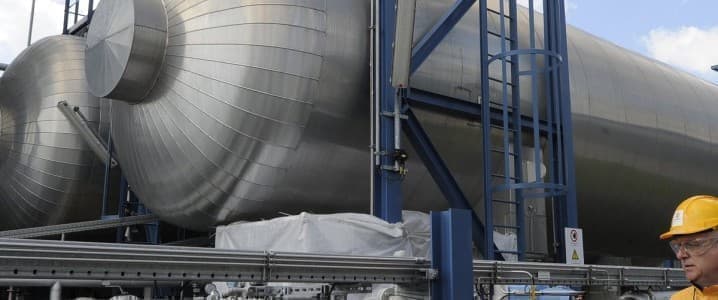After years of pushing for carbon capture and storage (CCS) technologies as the mid-term solution to cleaning up fossil fuel production, many are now concerned about the caliber of the CCS projects currently in motion. As oil firms around the world race to incorporate CCS into their operations, to decarbonize without giving up on oil completely, are they making the right decisions or simply rushing to meet international ESG expectations?
It has been widely accepted that CCS will play a significant role in global net-zero ambitions. So long as the demand for oil and gas remains high, the production of fossil fuels will bridge the gap until we have access to a cleaner alternative. Therefore, establishing low-carbon operations and incorporating CCS technologies into production processes could help to reduce emissions until we can quit fossil fuels altogether.
However, a few years into the big CCS boom we are now seeing a lot of skepticism around the industry. Recent headlines criticize the U.S. for blowing a reported $1.1 billion on failed CCS projects. The U.S. Department of Energy (DEO) divided these funds across 11 carbon capture projects at coal-fired power plants and industrial facilities since 2009. But many of them turned out to be failures, with several never being built, according to a Government Accountability Office (GAO) report.
In addition to investing in CCS projects that never came to fruition, the government reportedly continued to fund operations that were not achieving important milestones. Many of these failed projects were seen in coal-fired power plants but as natural gas facilities become more competitive in terms of pricing and cleaner energy, many coal plants closed operations.
A spokesperson from the DOE explains how the institution is learning from its mistakes in order to improve, "This office will seek to prove the effectiveness of innovative technologies in real-world conditions at scale in order to pave the way towards widespread adoption and deployment," they stated.
And it’s not just in the U.S. that we are seeing CCS technologies not meet their full potential. In Canada, a project that was once hailed as the future of CCS is now under scrutiny. Oil major Shell is running a CCS facility called Quest in Alberta, decarbonising its oil sands production in the region by capturing carbon. Shell gained government support for the construction of the facility, with $120 million in funds from the Canadian government and a further $745 million from Alberta. In 2020, it was seen as a “thriving example”, reaching a milestone of 5 million tonnes of sequestered carbon dioxide – equivalent to taking approximately 1.25 million cars off the road. At this time, Shell was considering replicating its Quest project in other parts of Canada.
But the plant is now attracting criticism for releasing more CO2 into the atmosphere than it captures. This month, Global Witness published a report showing that although the plant captured 5 million tonnes of carbon dioxide since 2015, it also released 7.5 million metric tonnes of greenhouse gases into the atmosphere over that time. This means that just 48 percent of the carbon emissions from the oil sands operations were captured, far below the anticipated 90 percent rate, according to the findings.
Shell has responded to Global Witness saying it was mistaken over the type of project in question. A spokesperson for Shell explained, “Our Quest facility was designed some years ago as a demonstration project to prove the underlying CCS concept, while capturing around a third of CO2 emissions. It is not a hydrogen production facility.” In addition, “The hydrogen projects we’re planning – like Polaris – will use a new technology that captures more than 90% of emissions. Global Witness are comparing apples with pears,” they stated.
While CCS is vital in the shift to green, bridging the gap while oil and gas are still in high demand, governments and energy firms should be investing wisely, not simply throwing their money at risky CCS projects to meet ESG expectations. In Europe, the German Climate Minister announced this month that the speed of carbon cuts needs to be trebled to achieve carbon neutrality. While CCS may not offer the long-term solution for decarbonizing, it can help support low-carbon oil and gas operations in the mid-term.
But let’s not forget, for every failure, there are also success stories when it comes to CCS. For example, Norway’s Equinor has carried out more than 25 years of operations injecting carbon into a saline aquifer. And with CCS only just now becoming more commonplace, there will be both successes and failures just like with all new energy projects. It is now the responsibility of energy firms and governments investing in the technology to ensure they learn from early practices and improve CCS operations over the coming decades.
By Felicity Bradstock for Oilprice.com
More Top Reads From Oilprice.com:
- It’s Full Speed Ahead For The World’s Most Exciting Oil Play
- Tight Physical Crude Market Points To Higher Oil Prices
- Shell To Reduce Output At Europe’s Biggest Oil Refinery



















The province emits 275 million tonnes per year
That is 1% of the CO2 emissions of the province.
Capturing all that CO2 will cost $124 billion per year.
That is $28,000 per Albertan per year.
The pressure to have CCS up-and-running is so great that we are persuaded to fudge the numbers and people's impressions about how well CCS plants are performing.
We will see a growing need to use energy wisely as environmental consequences weigh on us in parallel with the higher prices we pay for energy. It'll be a double-whammy. No easy way out. More wisdom needed. But let's be honest about what works and what doesn't.